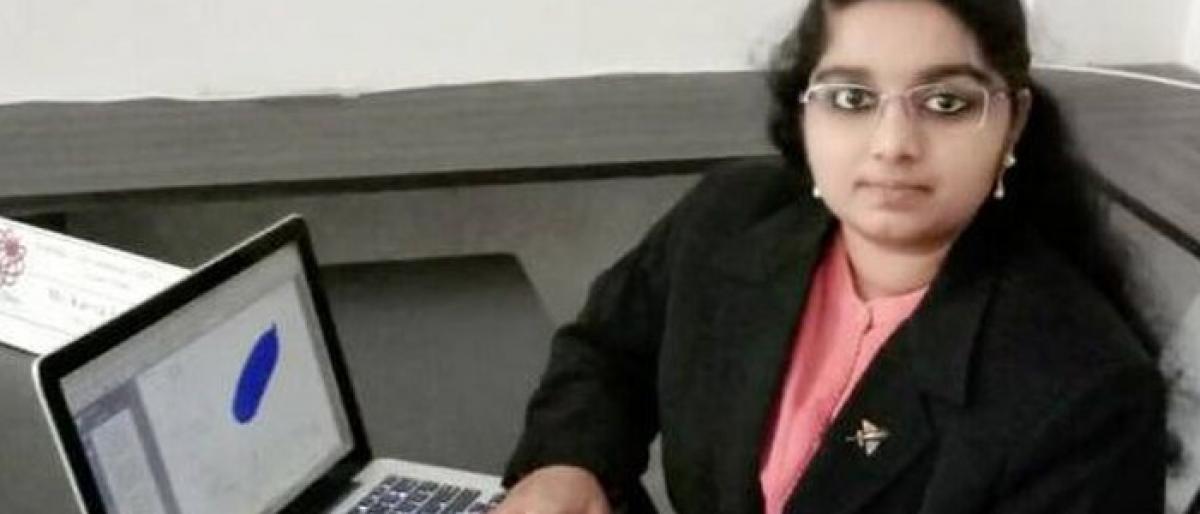Live
- NIST hosts alumni meet
- Upcoming Telugu OTT Releases: A Treat for Telugu Cinema Lovers in December
- Vedamrit Honey’ launched
- Arjun Das Brings Mufasa to Life in Tamil
- Odisha move to prepare maritime perspective plan
- Jal Jeevan Mission empowering women in rural areas: PM Modi
- Pradhan urges Nadda to set up pharmacy unit in Odisha
- Assembly winter session ends ahead of schedule
- Nepali Army Chief General Ashok Raj Sigdel Strengthens Ties With India In Four-Day Visit
- BRS MLAs, MLCs Skip Second Day of Orientation Classes
Just In

The early 90s witnessed a new era with the invention of powered aircraft and the entire credit went to Wright Brothers – Wilbur and Orville Wright and subsequently the vehicle turned into a successful aeroplane. But, very few people know that there were mentions of Jalayan, Kaara, Tritala, Trichakra Ratha, Vaayu Ratha and Vidyut Ratha from the scriptures of Rig Veda, the ancient Vedic text signify
The early 90s witnessed a new era with the invention of powered aircraft and the entire credit went to Wright Brothers – Wilbur and Orville Wright and subsequently the vehicle turned into a successful aeroplane. But, very few people know that there were mentions of Jalayan, Kaara, Tritala, Trichakra Ratha, Vaayu Ratha and Vidyut Ratha from the scriptures of Rig Veda, the ancient Vedic text signifying the infinite knowledge base of India.
To explore the rich knowledge Vaddadi Kavya is decoding information from ancient Vedic texts apply it into modern technology. The never-ending translation or decoding activity has been started and designs for powerful Vimanas, space vehicle on four segments of nature such as air, water, ground and underwater are in the offing if they are successfully applied.
Vaddadi Kavya, whose parents hailed from East Godavari, Andhra Pradesh and now are settled in New Delhi, have been on the uphill task of decoding the Vedic text, basically ancient scientific knowledge on aerospace design and engineering and merging the texts with the modern technology through investigation.
The 25-year-old young woman from an engineering background in the aeronautical stream is now keenly focused on emerging technologies in aerospace designs linking them with the texts mentioned in the renowned Vedic literature of India.
“Ancient technology is 100 per cent efficient, free energy using and never harms or disturbs nature in any manner. The technology we are now adopting is very less advanced when compared to the highly advanced know-how applied during the ancient period. The vehicles don’t create any space debris, spoil environs and what we need is understanding them thoroughly,” says Kavya.
Born and raised in Hyderabad, Kavya states that since childhood she had a keen interest in scientifically interpreting lullabies, shorty stories of mythology, and literature of God. And the travel over the air, water, and underground in the Vedic texts fascinated her.
“I decided to focus on the subject when I was studying aeronautical engineering and finally settled on it while working as a design engineer, CFD and structural analyst in Vedas Company. Even though there has been no significant research on decoding the ancient technologies, I am trying to decode the Sanskrit texts into modern science and technology,” she shares.
In fact, India is a country basically with profound beliefs on the region and philosophical traditions where there are constraints for continuing studies on Vedic versus correlating them with the modern technology since they attract criticism and disagreement with the new theories. Still, Kavya has been doing her best to decode the technology unrelentingly.
Now, she is busy with works on Vimana Shastra and she has completed the 3D modelling on Vedic Vimanas and their CFD analysis was also prepared to reveal the flying abilities of the space crafts that are mentioned in the Vedic literature and epics. She is also working on the technical interpretations of the Vimana Shastra Shlokas to explore the advanced aerial wars, defence systems, along with eco-friendly manufacturing, propulsion, and space travel.
Kavya is leading a group of researchers in scientific works on Advanced Space technology Investigators for Knowledge (SWASTIK) on Vimana technology.
With the support and guidance of former scientists of the ISRO, DRDO and NASA, she worked on Vedic Vimana’s manufacturing, structures, propulsion, aerodynamics, space mechanics and is currently working on Vimana prototypes, re-translations and interpretations with an emphasis on Reverse Engineering.
“I also met the Union Ministers Jitendra Singh and Prakash Javadekar requesting them for implementation of Vimana Shastra project in Indian premier organisations like ISRO and DRDO last year. I am still waiting for a reply with a concrete action by the Union government,” Kavya informs.
By: PV Prasad

© 2024 Hyderabad Media House Limited/The Hans India. All rights reserved. Powered by hocalwire.com







